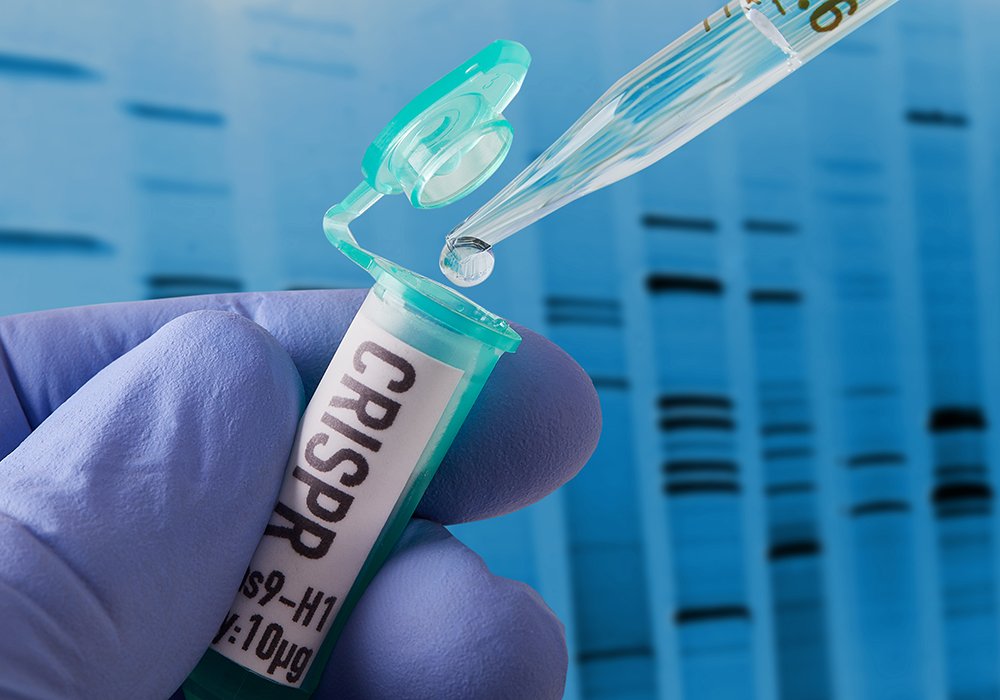Scientist still sees CRISPR acceptance issues

Glacier FarmMedia – Agriculture has a powerful set of tools in CRISPR gene-editing technology to overcome the twin challenges of preserving and increasing food production while minimizing greenhouse gases, said one of CRISPR’s discoverers.
“I think the opportunities are so exciting,” said Jennifer Doudna, a biochemist at the University of California at Berkeley. “CRISPR is already being used to manipulate properties of plants that include crop yields, drought tolerance, pest tolerance, things that are going to have important implications around the world especially as we deal with the challenges of climate change.”
Why it matters: CRISPR technology could help agriculture meet increasing food demands and environmental challenges, but technical and regulatory hurdles must be overcome to fully benefit from the technology.
Doudna was speaking from her home base in California at a hybrid in-person and virtual event hosted by Ag-West Bio in Saskatoon on Sept. 21. Together with French scientist Emmanuelle Charpentier, Doudna shared the 2020 Nobel Prize in Chemistry for the discovery of CRISPR-Cas9.
Like much biotechnology, CRISPR-Cas9 takes advantage of something nature has already worked out — in this case, how bacteria fight off viruses.
CRISPR is short for “clustered regularly interspaced short palindromic repeats.” Those repeats are copies of small bits of genetic material from viruses. These “molecular mugshots” allow the bacteria to recognize harmful viruses and unleash Cas9, an enzyme that acts like a chemical scissors to chop up the viral DNA.
“CRISPR is an adaptive immune system found naturally in bacteria,” Doudna said. “It’s nature’s way of finding and destroying viruses before they can harm the bacteria.”
CRISPR works in any cell whether it be plant, animal or human. Doudna sees applications for agriculture falling into two buckets: discovery and application.
On the discovery side, the technology allows researchers to study single genes or genes in combination to find out what they do in any plant, not just the usual lab species such as Arabidopsis.
“It’s opening the door to fundamental research that would have been difficult or impossible to do,” she said.
As for applications, CRISPR is being harnessed to enhance nutritional value of plants. The first such product, an enhanced tomato, has just reached supermarket shelves in Japan.
CRISPR is also being used to tease out the secrets of photosynthesis in plants, a prize that could drastically increase drought resistance, water-use efficiency, and ultimately, food production.
Despite its power, CRISPR has limitations. It can edit genes, but it cannot rewrite entire genomes. It could be used to quickly detect a virus in a sick animal, but it couldn’t easily be used as a treatment because it would have to somehow be inserted into every infected cell.
This means that it’s likely a non-starter to try to treat American elms against Dutch elm disease, which is devastating urban forests across North America, at least in the short term.
But it might be of use against the elm bark beetle that spreads the disease. CRISPR could be used to control beetle reproduction, something already being done with mosquitoes.
In a sense, Doudna said CRISPR is a way of speeding up and directing what is already happening in nature through evolution.
Apply enough drought pressure to a crop, and eventually the toughest plants will be the only ones to survive. With climate change looming, there isn’t time for this type of traditional breeding. But there is CRISPR.
“It’s a powerful way that we can now control genetics and test the function of genes as well as make changes that have very practical applications.”
Those applications of CRISPR are not limited by geography. Doudna sees opportunity to work with local teams of scientists and farmers around the world to develop local crops that are most important to them and their environments.
Despite this, like other genetic engineering techniques, CRISPR faces the wild card of public acceptance and regulatory hurdles. The European Union, for example, ruled in 2018 that gene-edited crops were genetically modified organisms, extending the de facto ban on GMOs. This decision is being reviewed.
Doudna said scientists have the responsibility to both consider the social implications of new technologies and to be as transparent with the public as possible about what they are doing, including the point that science often yields the unexpected.
She cites the current mRNA vaccines against COVID-19 as an example. The technology had been developed for decades in obscurity before finally yielding something useful. This is when the public took notice.
“The science behind that goes back a few decades, and really started with just very fundamental research,” she said. “So I think the investments that are being made now, although they may be targeted in one area, will probably have implications in agriculture that we maybe can’t see right now.”
Public outreach was top of mind when Doudna founded the Innovative Genomics Institute at UC Berkeley. Regular events put scientists face-to-face with the public, and the institute provides free communications tools aimed particularly at teachers and students.
“I do think investing in education is so important to help people whose future is going to be shaped by these technologies to fully understand what they’re all about.”
This article was originally published at The Western Producer.
Source: Farmtario.com

